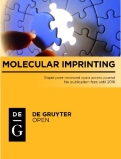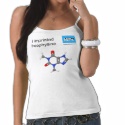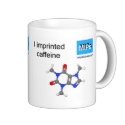|
|
Reference type: Book Chapter
Authors: Breton F, Piletska EV, Karim K, Rouillon R, Piletsky SA
Publication date: 2006
Chapter title: Mimicking the plastoquinone-binding pocket of Photosystem II using molecularly imprinted polymers.
Chapter number: 14
Page numbers: 155-165.
DOI: 10.1007/978-0-387-36672-2_14
Alternative URL: http://www.eurekah.com/abstract.php?chapid=2845&bookid=199&catid=2
Book title: Biotechnological Applications of Photosynthetic Proteins: Biochips, Biosensors and Biodevices
Editors: Giardi MT, Piletska EV
Publisher: Landes Bioscience
City: Georgetown, Texas
Series title: Biotechnology Intelligence Unit
Abstract: The photosystem II (PSII) is a complex system consisting of at least 10 proteins. The electron-flow events in PSII are mediated via prosthetic groups (plastoquinones QA and QB) bound to two proteins called D1 and D2. A large group of photosynthesis-inhibiting herbicides consisting of arylureas, triazines, triazinones and phenylic herbicides has an ability to replace the plastoquinone QB from its binding pocket located in the D1 protein, interrupting the electron flow between the photosystems and causing the plant's death. The plastoquinone-binding pocket continues to be a subject of intense research by specialists working on the design and testing of new herbicides, as well as scientists and engineers developing new sensors for herbicide detection. The goal of this review is to analyze the structure of the herbicide-binding pocket of the D1 protein in comparison to known natural and synthetic receptors of herbicides with the aim of developing efficient synthetic mimics useful in the generation of new stable environmental sensor devices.
|


 I imprinted theophylline T-shirt ball and stick
I imprinted theophylline T-shirt ball and stick







.jpg) I love MISPE Magnet
I love MISPE Magnet







 caffeine template mug ball and stick model
caffeine template mug ball and stick model






